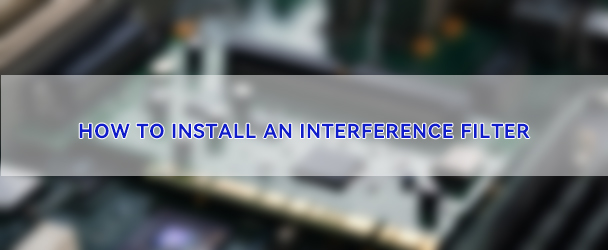How to install an interference filter
赛纪电子2024-02-18 15:00:00page views:272

The installation of interference filters is a crucial process that directly affects their filtering effectiveness. Here are some suggestions on how to properly install interference filters:
I. Selection of Installation Location
- Near the Interference Source: When multiple sensitive devices are affected by the same interference source, the filter should be installed as close to the interference source as possible. This helps to localize the interference near the source, cutting off the interference path and suppressing the emission from the source.
- Near the Sensitive Device: If there is only one sensitive device but multiple interference sources, the filter should be placed near the sensitive device. This helps to protect the sensitive device from interference from multiple sources.
- Installation on the PCB: On a printed circuit board (PCB), the filter should be installed at the interface and, if necessary, installed in parallel to prevent coupling between different signal lines before and after filtering.
II. Wiring Requirements
- Isolation of Input and Output Lines: The input and output lines of the filter must be shielded and isolated to prevent them from coupling with each other when they are close, which would reduce the filtering effect.
- Avoidance of Interference Signal Coupling: Other signal wires should be kept away from the interference signal wires that require filtering to prevent the interference signal source from coupling into other signal wires.
- Wiring After Filtering: The signal wires after filtering should be kept away from strong interference signal wires to avoid secondary contamination of the filtered signal lines.
III. Grounding Requirements
- Good Grounding: Grounding the filter through a thin ground wire can affect its high-frequency filtering effect. Therefore, the grounding case of the filter should be well bonded to the metal structural plane to improve the grounding effect.
- Selection of a Quiet Ground: When selecting a grounding point, priority should be given to a quiet ground (i.e., a ground plane without contamination from strong interference sources).
- Shortening the Grounding Wire: The grounding wire should be as short and thick as possible to reduce the parasitic inductance of the grounding. At the same time, the grounding point should be selected where the loop area of the return interference source is the smallest.
IV. Installation Steps (Taking a Power Filter as an Example)
- Confirm Filter Parameters: Verify that the filter's current, voltage, interface type, and interference type parameters meet the equipment requirements.
- Secure the Filter: Use screws to secure the filter to the equipment case or chassis to ensure it is firmly in place.
- Connect Power Lines: Connect the live (L) and neutral (N) lines from the power supply to the input terminals of the filter. Then, connect the live (L) and neutral (N) lines from the output terminals of the filter to the internal circuitry of the equipment.
- Connect the Grounding Wire: Connect the grounding terminal of the filter to the grounding point of the equipment, ensuring that the grounding wire is short and has low impedance.
- Check the Wiring: Inspect the input and output wiring to ensure they are separated and as short as possible.
V. Precautions
- Avoid Electromagnetic Coupling: During installation, avoid obvious electromagnetic coupling paths between the input and output lines of the filter. For example, do not bundle the input and output lines together or install them too close to each other.
- Select the Appropriate Filter: Choose a filter that is suitable for the specific needs of the equipment and the type of interference. For example, for high-frequency interference, select a filter with good high-frequency filtering performance.
- Follow Installation Instructions: Carefully read the installation instructions for the filter and follow them during the installation process.
In summary, proper installation of interference filters requires consideration of multiple aspects, including installation location, wiring requirements, grounding requirements, and more. Only by following the correct installation steps and precautions can the performance of the filters be fully utilized.


